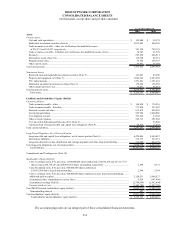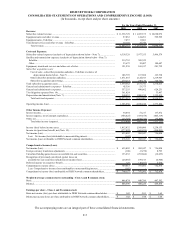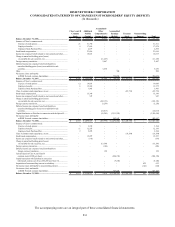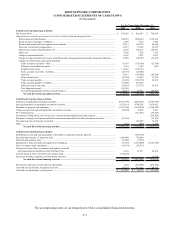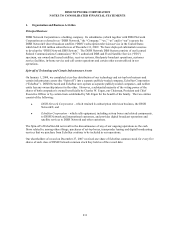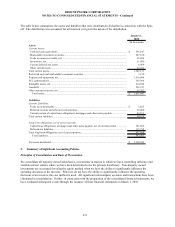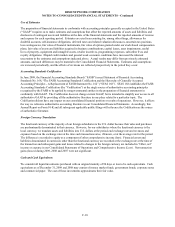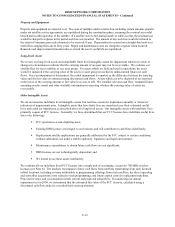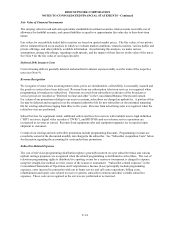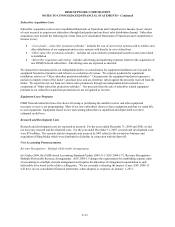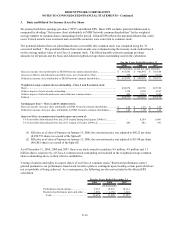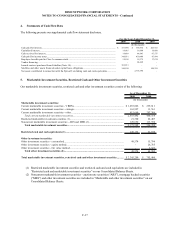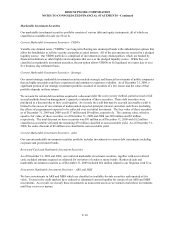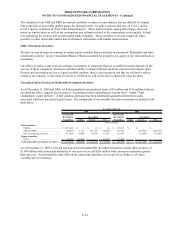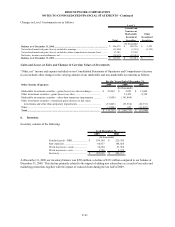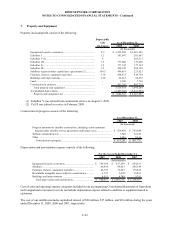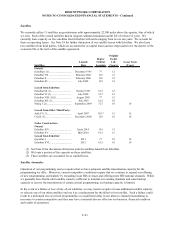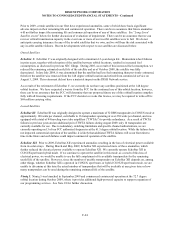Dish Network 2009 Annual Report Download - page 104
Download and view the complete annual report
Please find page 104 of the 2009 Dish Network annual report below. You can navigate through the pages in the report by either clicking on the pages listed below, or by using the keyword search tool below to find specific information within the annual report.DISH NETWORK CORPORATION
NOTES TO CONSOLIDATED FINANCIAL STATEMENTS - Continued
F-14
Fair Value of Financial Instruments
The carrying value for cash and cash equivalents, marketable investment securities, trade accounts receivable, net of
allowance for doubtful accounts, and current liabilities is equal to or approximates fair value due to their short-term
nature.
Fair values for our publicly traded debt securities are based on quoted market prices. The fair values of our private
debt is estimated based on an analysis in which we evaluate market conditions, related securities, various public and
private offerings, and other publicly available information. In performing this analysis, we make various
assumptions, among other things, regarding credit spreads, and the impact of these factors on the value of the notes.
See Note 9 for the fair value of our long-term debt.
Deferred Debt Issuance Costs
Costs of issuing debt are generally deferred and amortized to interest expense ratably over the terms of the respective
notes (see Note 9).
Revenue Recognition
We recognize revenue when an arrangement exists, prices are determinable, collectibility is reasonably assured and
the goods or services have been delivered. Revenue from our subscription television services is recognized when
programming is broadcast to subscribers. Payments received from subscribers in advance of the broadcast or
service period are recorded as “Deferred revenue and other” in the Consolidated Balance Sheets until earned.
For certain of our promotions relating to our receiver systems, subscribers are charged an upfront fee. A portion of this
fee may be deferred and recognized over the estimated subscriber life for new subscribers or the estimated remaining
life for existing subscribers ranging from three to five years. Revenue from advertising sales is recognized when the
related services are performed.
Subscriber fees for equipment rental, additional outlets and fees for receivers with multiple tuners, high definition
(“HD”) receivers, digital video recorders (“DVRs”), and HD DVRs and our in-home service operations are
recognized as revenue as earned. Revenue from equipment sales and equipment upgrades are recognized upon
shipment to customers.
Certain of our existing and new subscriber promotions include programming discounts. Programming revenues are
recorded as earned at the discounted monthly rate charged to the subscriber. See “Subscriber Acquisition Costs” below
for discussion regarding the accounting for costs under these promotions.
Subscriber-Related Expenses
The cost of television programming distribution rights is generally incurred on a per subscriber basis and various
upfront carriage payments are recognized when the related programming is distributed to subscribers. The cost of
television programming rights to distribute live sporting events for a season or tournament is charged to expense
using the straight-line method over the course of the season or tournament. “Subscriber-related expenses” in the
Consolidated Statements of Operations and Comprehensive Income (Loss) principally include programming
expenses, costs incurred in connection with our in-home service and call center operations, billing costs,
refurbishment and repair costs related to receiver systems, subscriber retention and other variable subscriber
expenses. These costs are recognized as the services are performed or as incurred.


